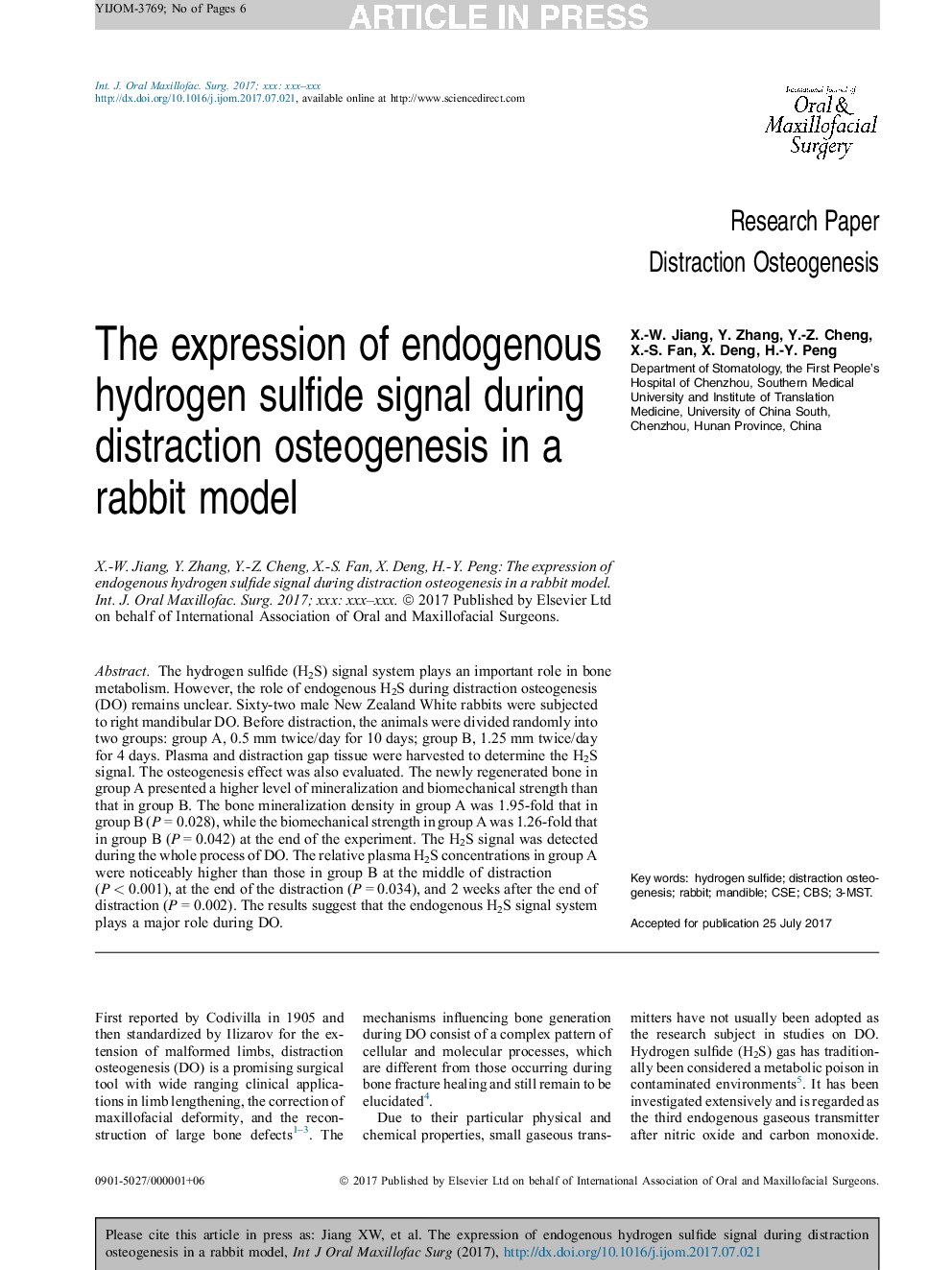| Article ID | Journal | Published Year | Pages | File Type |
|---|---|---|---|---|
| 8697893 | International Journal of Oral and Maxillofacial Surgery | 2018 | 6 Pages |
Abstract
The hydrogen sulfide (H2S) signal system plays an important role in bone metabolism. However, the role of endogenous H2S during distraction osteogenesis (DO) remains unclear. Sixty-two male New Zealand White rabbits were subjected to right mandibular DO. Before distraction, the animals were divided randomly into two groups: group A, 0.5Â mm twice/day for 10 days; group B, 1.25Â mm twice/day for 4 days. Plasma and distraction gap tissue were harvested to determine the H2S signal. The osteogenesis effect was also evaluated. The newly regenerated bone in group A presented a higher level of mineralization and biomechanical strength than that in group B. The bone mineralization density in group A was 1.95-fold that in group B (PÂ =Â 0.028), while the biomechanical strength in group A was 1.26-fold that in group B (PÂ =Â 0.042) at the end of the experiment. The H2S signal was detected during the whole process of DO. The relative plasma H2S concentrations in group A were noticeably higher than those in group B at the middle of distraction (PÂ <Â 0.001), at the end of the distraction (PÂ =Â 0.034), and 2 weeks after the end of distraction (PÂ =Â 0.002). The results suggest that the endogenous H2S signal system plays a major role during DO.
Related Topics
Health Sciences
Medicine and Dentistry
Dentistry, Oral Surgery and Medicine
Authors
X.-W. Jiang, Y. Zhang, Y.-Z. Cheng, X.-S. Fan, X. Deng, H.-Y. Peng,
